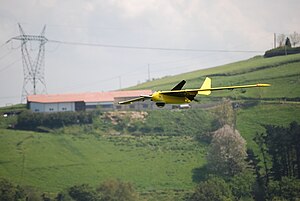Video animation of a missile-armed drone taking out an armored vehicle and attacking a United States aircraft carrier
AT the Zhuhai air show in southeastern China last November, Chinese companies startled some Americans by unveiling 25 different models of remotely controlled aircraft and showing video animation of a missile-armed drone taking out an armored vehicle and attacking a United States aircraft carrier.
The presentation appeared to be more marketing hype than military threat; the event is China’s biggest aviation market, drawing both Chinese and foreign military buyers. But it was stark evidence that the United States’ near monopoly on armed drones was coming to an end, with far-reaching consequences for American security, international law and the future of warfare.
Eventually, the United States will face a military adversary or terrorist group armed with drones, military analysts say. But what the short-run hazard experts foresee is not an attack on the United States, which faces no enemies with significant combat drone capabilities, but the political and legal challenges posed when another country follows the American example. The Bush administration, and even more aggressively the Obama administration, embraced an extraordinary principle: that the United States can send this robotic weapon over borders to kill perceived enemies, even American citizens, who are viewed as a threat.
“Is this the world we want to live in?” asks Micah Zenko, a fellow at the Council on Foreign Relations. “Because we’re creating it.”
What was a science-fiction scenario not much more than a decade ago has become today’s news. In Iraq and Afghanistan, military drones have become a routine part of the arsenal. In Pakistan, according to American officials, strikes from Predators and Reapers operated by the C.I.A. have killed more than 2,000 militants; the number of civilian casualties is hotly debated. In Yemen last month, an American citizen was, for the first time, the intended target of a drone strike, as Anwar al-Awlaki, the Qaeda propagandist and plotter, was killed along with a second American, Samir Khan.
If China, for instance, sends killer drones into Kazakhstan to hunt minority Uighur Muslims it accuses of plotting terrorism, what will the United States say? What if India uses remotely controlled craft to hit terrorism suspects in Kashmir, or Russia sends drones after militants in the Caucasus? American officials who protest will likely find their own example thrown back at them.
“The problem is that we’re creating an international norm” — asserting the right to strike preemptively against those we suspect of planning attacks, argues Dennis M. Gormley, a senior research fellow at the University of Pittsburgh and author of “Missile Contagion,” who has called for tougher export controls on American drone technology. “The copycatting is what I worry about most.”
The qualities that have made lethal drones so attractive to the Obama administration for counterterrorism appeal to many countries and, conceivably, to terrorist groups: a capacity for leisurely surveillance and precise strikes, modest cost, and most important, no danger to the operator, who may sit in safety thousands of miles from the target.
To date, only the United States, Israel (against Hezbollah in Lebanon and Hamas in Gaza) and Britain (in Afghanistan) are known to have used drones for strikes. But American defense analysts count more than 50 countries that have built or bought unmanned aerial vehicles, or U.A.V.’s, and the number is rising every month. Most are designed for surveillance, but as the United States has found, adding missiles or bombs is hardly a technical challenge.
“The virtue of most U.A.V.’s is that they have long wings and you can strap anything to them,” Mr. Gormley says. That includes video cameras, eavesdropping equipment and munitions, he says. “It’s spreading like wildfire.”
Bookmark this page for “Drone Arms Race” and check back regularly as these articles update on a very frequent basis. The view is set to “news”. Try clicking on “video” and “2” for more articles.








